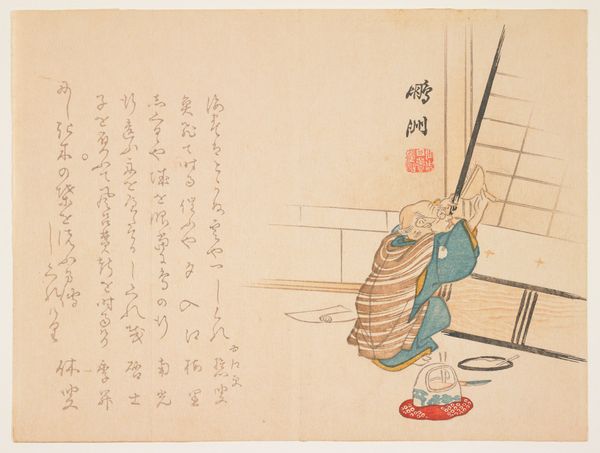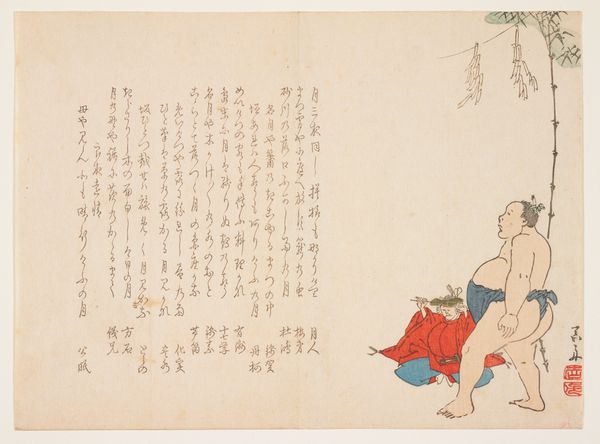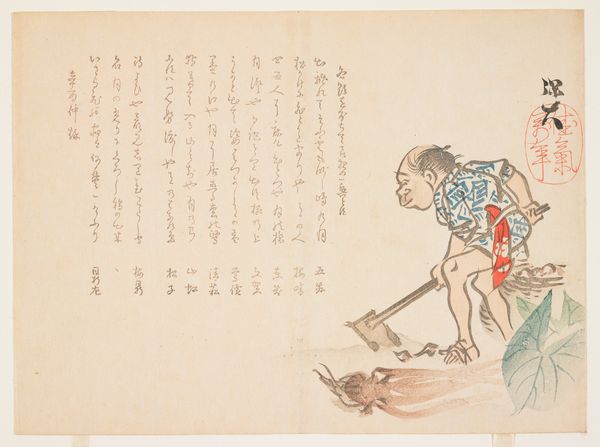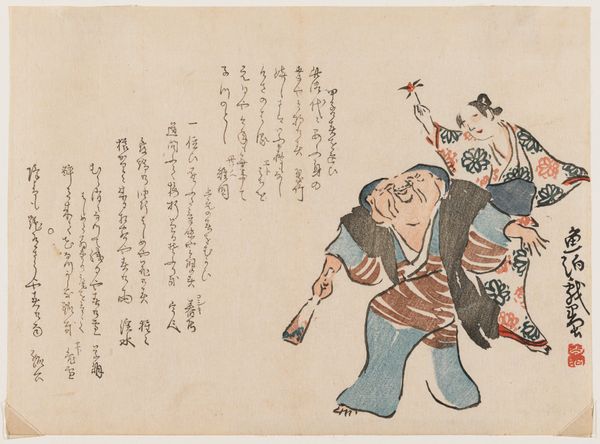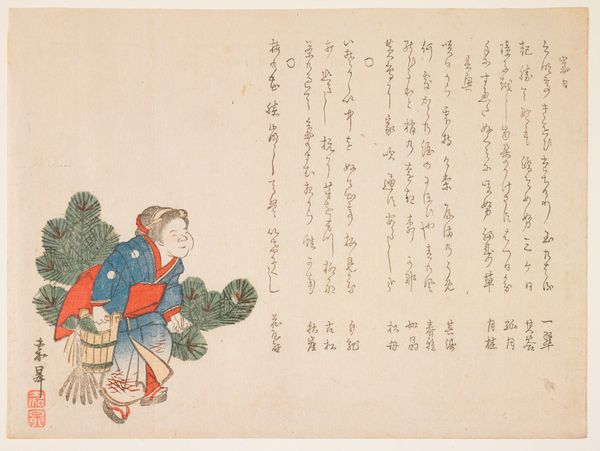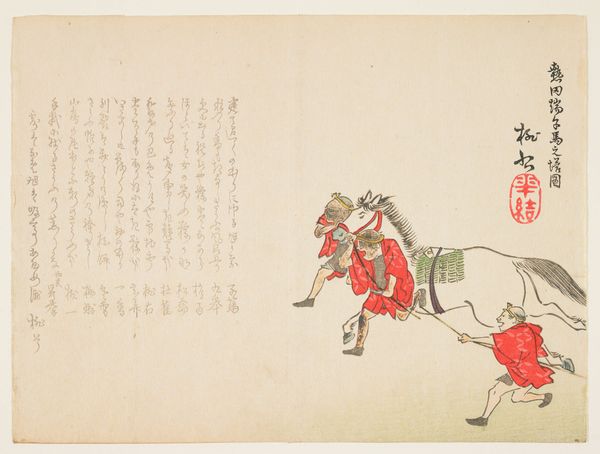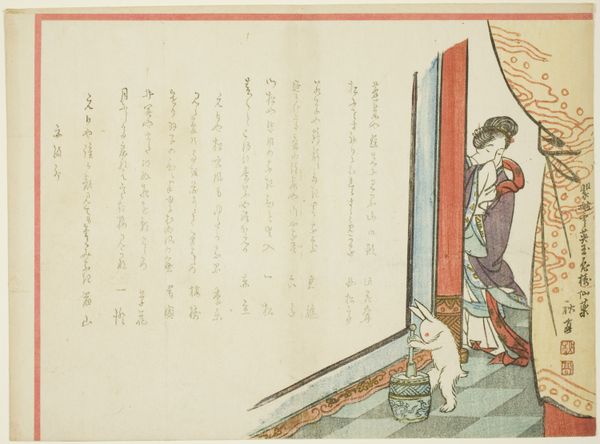
#
toned paper
#
water colours
#
pastel soft colours
# print
#
japan
#
personal sketchbook
#
sketchbook drawing
#
watercolour bleed
#
watercolour illustration
#
storyboard and sketchbook work
#
sketchbook art
#
watercolor
Dimensions: 7 3/16 x 9 1/2 in. (18.3 x 24.1 cm) (image, sheet)
Copyright: Public Domain
Editor: This is "(Boy peeping at a woman behind a curtain)," thought to have been created by Satō Hōdai around the 1860s, using watercolor on toned paper. I am struck by how intimate the scene is, like a snapshot of a fleeting moment. What stands out to you most? Curator: I notice the division of labor embedded within this artwork's production. We see the artist's hand in the initial sketch, guiding the lines and composition, but also the work of the printers and carvers essential for producing the final print. This interplay between individual artistic vision and the collaborative aspect of printmaking is critical. The woodblock medium itself, chosen and prepared, signifies both a connection to tradition and a potential for wider dissemination of the image. Do you see how the printmaking process democratizes artmaking? Editor: That's an interesting point. I was mainly focusing on the figures. So, understanding the material process can help understand its audience too? Curator: Exactly! And think about the consumption of prints in 19th-century Japan. Prints were mass-produced and widely accessible, reflecting changing social dynamics and the rise of a merchant class with disposable income. How might this influence the subjects that artists like Hōdai chose to depict, and the styles they employed? Consider, for instance, the depiction of everyday life rather than exclusively elite subjects. The print becomes a commodity that represents something accessible and consumable to everyday life. Editor: I didn't think about that before. Thinking about it now, it shows how art is tied to a material means, rather than divine creation by a singular artist. Curator: Indeed! And remember, analyzing art means looking closely at the material conditions of its creation and reception. Art doesn't appear in a vacuum; it is woven into a web of labor, technology, and consumption. Editor: I've definitely got a new appreciation for the print now! Thanks.
Comments
minneapolisinstituteofart almost 2 years ago
⋮
In Japan, people created temporary enclosures by hanging curtains from ropes tied to poles or tree trunks. Such enclosures were used by private parties, which gathered to enjoy flowering cherry trees with tasty picnics and copious rice-wine. In this print, the artist Gyodai pictures a love struck man who seems irresistibly drawn to a woman within such an enclosure. Her allure is heightened by the fact that she is partially hidden by the curtain. The amorous man, wearing a silly grin, may be trying to sneak into the party in an attempt to win the woman's affection. Gyodai's comical depiction captures the drunken revelry and mischief of such parties.
Join the conversation
Join millions of artists and users on Artera today and experience the ultimate creative platform.
